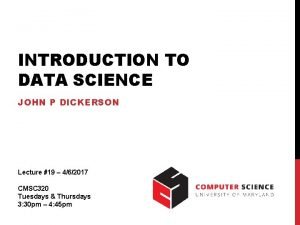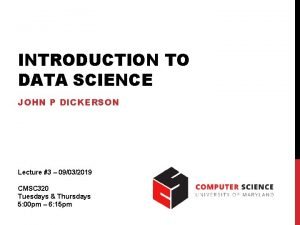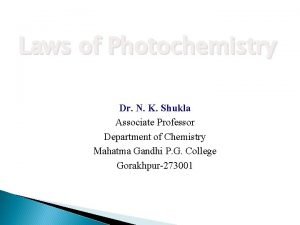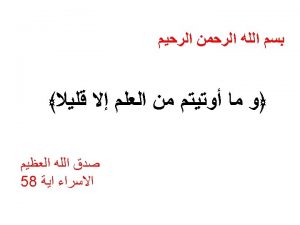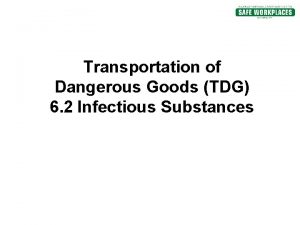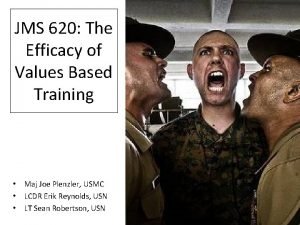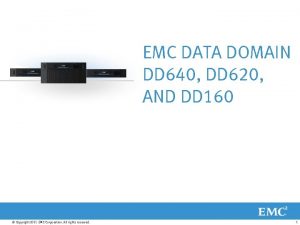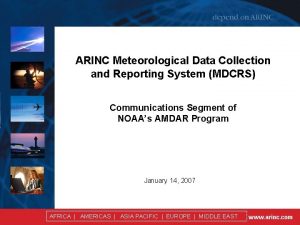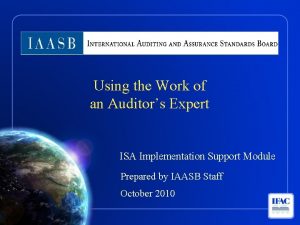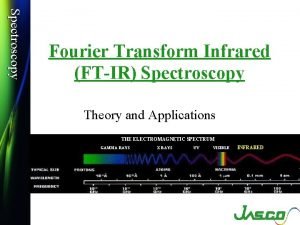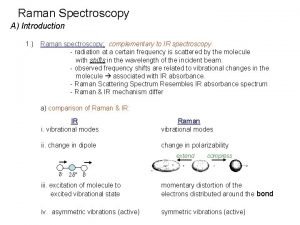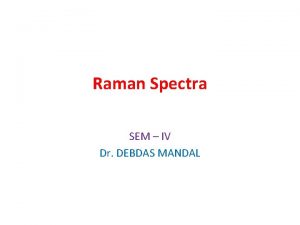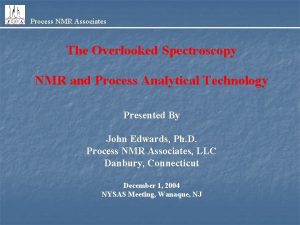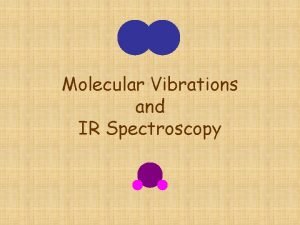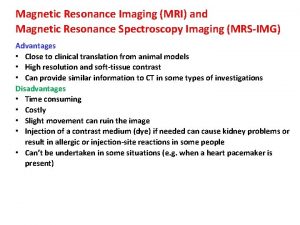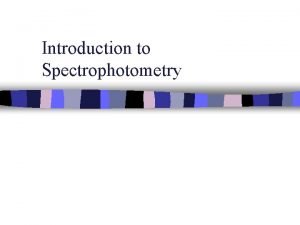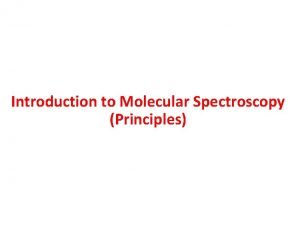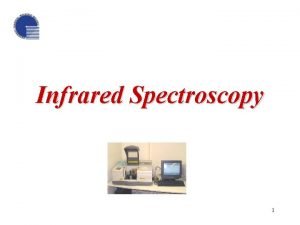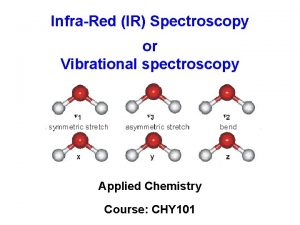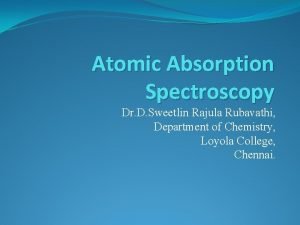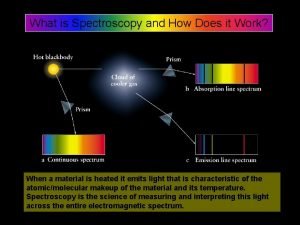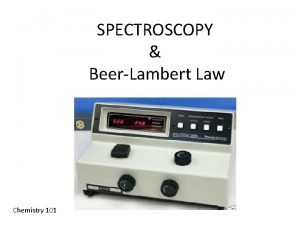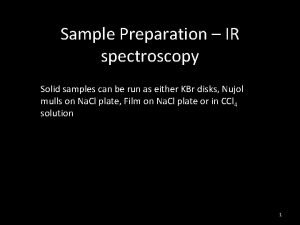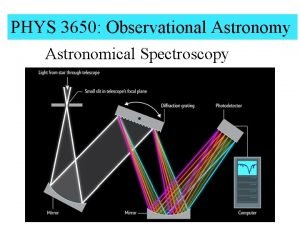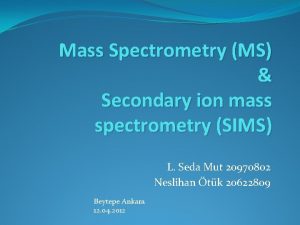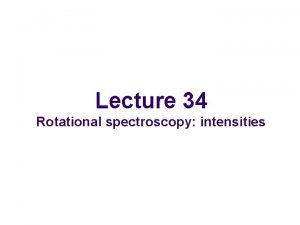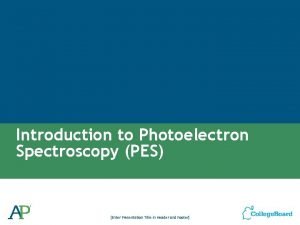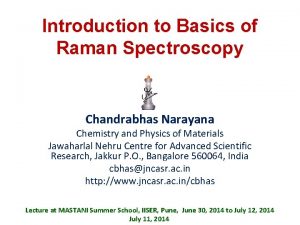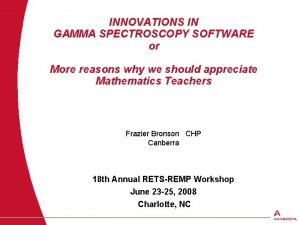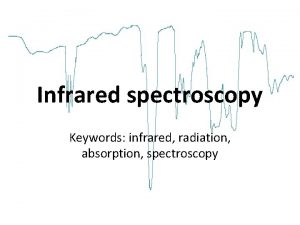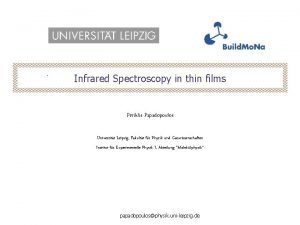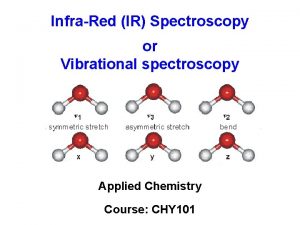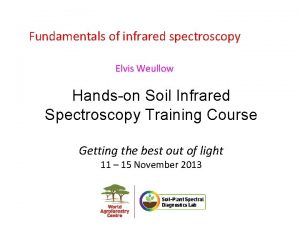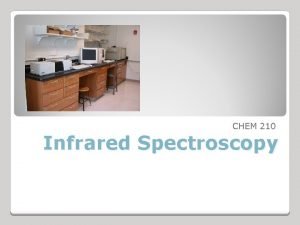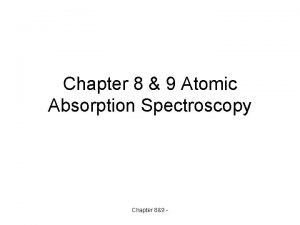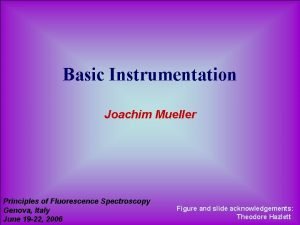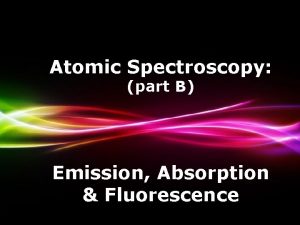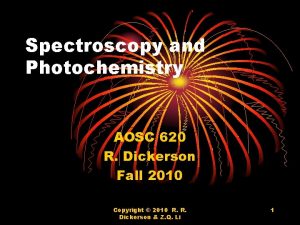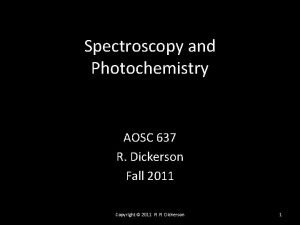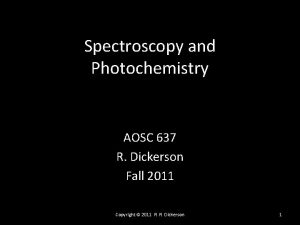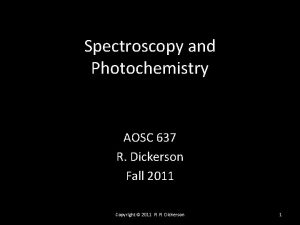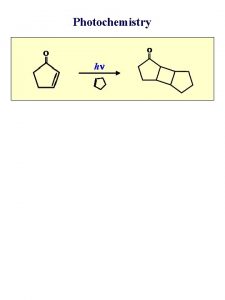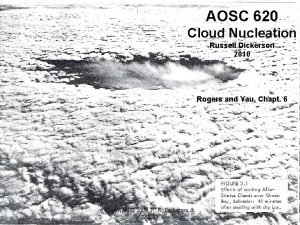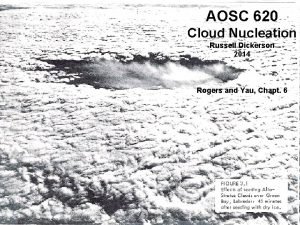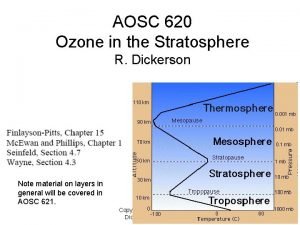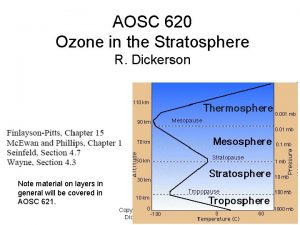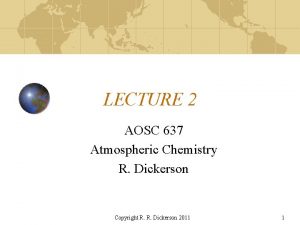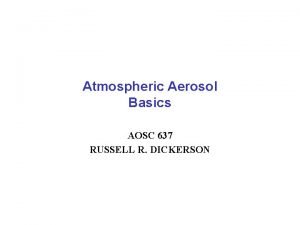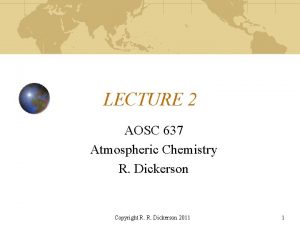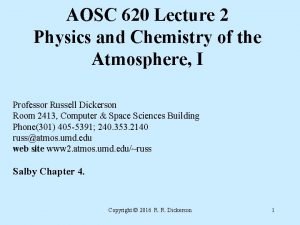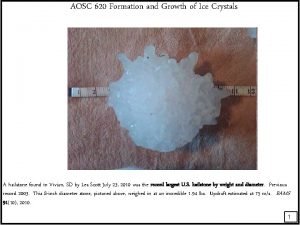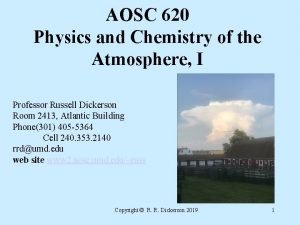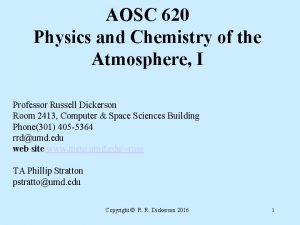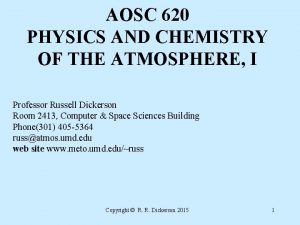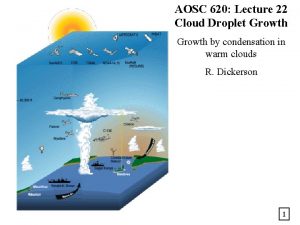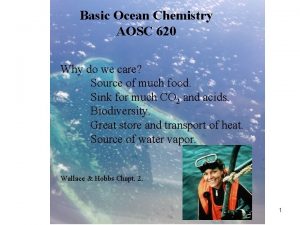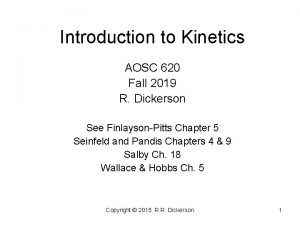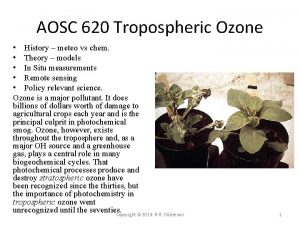Spectroscopy and Photochemistry AOSC 620 R Dickerson Copyright




























































- Slides: 60

Spectroscopy and Photochemistry AOSC 620 R. Dickerson Copyright © 2013 R. R. Dickerson 1

Outline • Additional details on spectroscopy and photochemistry as they relate to atmospheric chemistry and physics. • Direct measurements of photolysis rate coefficients (frequencies). • Tropospheric ozone. Copyright © 2013 R. R. Dickerson 2

Recap from AOSC 620 Spectroscopy - The study of the interaction of substances with electromagnetic radiation. The energy can be very great such as that of gamma rays or relatively weak such as that of microwaves. Different substances have such differing spectra that spectroscopy is usually used for positive identification. For example when new elements were being discovered the visible emission spectra were used for confirmation. Finlayson - Pitts, Chapters 2 & 3 Mc. Ewan & Phillips, Chapter 1 Wayne, Chapter 2. 6, 3. 1 - 3. 3 Seinfeld, Chapt. 4. 1 Copyright © 2010 R. R. Dickerson & Z. Q. Li 3

Photochemistry - The study of chemical reactions caused by the absorption of light. Laws of Photochemistry 1. Only light absorbed by a molecule or atom can effect a chemical change. 2. Absorption of light is a one quantum process therefore the sum of the efficiencies of the primary processes must be unity. This law holds for atmospheric processes, but not for some laboratory processes in which the photon flux is so great that a second photon can be absorbed before the energy from first photon is expelled. Copyright © 2010 R. R. Dickerson & Z. Q. Li 4

Copyright © 2010 R. R. Dickerson & Z. Q. Li 5

Copyright © 2013 R. R. Dickerson 6

Copyright © 2013 R. R. Dickerson & Z. Q. Li 7

Copyright © 2013 R. R. Dickerson & Z. Q. Li 8

Copyright © 2010 R. R. Dickerson & Z. Q. Li 9

Copyright © 2010 R. R. Dickerson & Z. Q. Li 10

Copyright © 2010 R. R. Dickerson & Z. Q. Li 11

So what are those funny symbols behind the O atoms and O 2 molecules? Term Symbols. Spectroscopy: A Quick Qualitative Description Term symbols show the energy state of atoms and molecules, as described by the quantum numbers. Atomic Quantum Numbers: n – principal quantum number. Value: 1, 2, 3, . . Tells which shell of an atom the e- resides. The farther from the nucleus the higher the n. l the azimuthal quantum number. Value: 0 to n-1. Describes the orbital angular momentum of the shape of the orbital. s – the spin quantum number. Value: ±½. j – the total (spin plus azimuthal) quantum number. Important for heavier atoms. Copyright © R. R. Dickerson 12

Spectroscopy: A Quick Qualitative Description, cont. Energy states of Molecules: Molecular Quantum Numbers L – the azimuthal quantum number. Value: 0 to n-1. Orbital angular momentum s – the spin quantum number. Value: ±½. Same as in atoms. J – rotational quantum number. Value: 1, 2, 3, . . Tells which shell of an atom the e- resides. The farther from the nucleus the higher the n. – vibrational quantum number. Value: 1, 2, 3, . . K – vertical component of the total angular momentum. This QN only exists for polyatomic molecules. g/u – gerade/ungerade; symmetry terms. Reflection through the center of symmetry of molecule. +/- – plus/minus; symmetry terms. Reflection through the plane of symmetry of molecule. Only for diatomics. Copyright © R. R. Dickerson 13

Internal Energy of Molecules E total = E rot + E vib + E elect The equipartition principle says that the total energy of a molecule will be the sum of the internal energy terms (rotational, vibrational, and electronic) and the external (translational) energy. Rotational energy can be expressed as: E rot = B J(J + 1) Where B = h/(8 p 2 Ic), often in units of cm-1, with I as the moment of inertia. Vibrational energy of an anharmonic oscillator can be expressed as: E vib = h vib( + ½) – h vib( + ½)2 + h vib( + ½)3 + … Where vib is a constant dependent on the bond strength and length. Copyright © R. R. Dickerson 14

Term Symbols for Atoms and Molecules SL j SL± g/u Where S = 2 s + 1. When the value of S is 1, 2, 3, the spectra appear as singlets, doublets, triplets etc. L or L = 0 1 2 3 4 5 … Atoms = S P D F G H … Molecules = S P D F G H. . . Atoms and molecules tend toward the lowest energy levels. Finding the lowest levels for molecules is complicated, but for atoms: 1. Lowest n 2. Highest l 3. Highest s (no two electrons in the same shell until they are all occupied by at least one electron). 4. Lowest j Copyright © R. R. Dickerson 15

Why don’t O(1 D) atoms relax to O(3 P) in the troposphere and stratosphere? Where do O(1 D) atoms relax to O(3 P)? and O (1 S 0) relax to O(1 D 2) ? Copyright © R. R. Dickerson 16

https: //www. youtube. com/watch? v=f. Vs. ONlc 3 OUY 17

Copyright © 2013 R. R. Dickerson & Z. Q. Li 18

Transitions in oxygen atoms. Copyright © 2011 R. R. Dickerson 19

Selection Rules for Atomic Transitions Dn = 0, 1, 2, … (no restrictions) Dl = ± 1 Dj = 0, ± 1 DS = 0 This is the strongest rule: no multiplicity change. DS ≠ 0 is a “forbidden” transition. Let us examine O atoms as an example. Copyright © R. R. Dickerson 20

Electrons in ground state Oxygen atoms: O(3 P). Copyright © 2013 R. R. Dickerson 21

Copyright © 2013 R. R. Dickerson & Z. Q. Li 22

Fraunhofer Lines in the solar spectrum 23

The Fraunhofer lines in the solar spectrum are a good example of absorption spectroscopy. Elements in the solar and terrestrial atmospheres absorb radiation. They have funny historical names not to be confused with spectroscopic designations. D 1 & D 2 are Na doublets, a is O 2; C, F, G', and h are H-atoms. Highly important in remote sensing. Copyright © 2013 R. R. Dickerson & Z. Q. Li 24

Selection Rules for Molecular Transitions DL = 0, ± 1 DJ = ± 1 in monatomic molecules 0, ± 1 in polyatomic molecules D = ± 1 for fundamental vibrations and rotations ± 2, ± 3… for overtones (Frank-Condon principle for vibronic transitions) DK = 0 for polyatomic molecules only. g and u, no change. +/- must change. DS = 0 This is the strongest rule: no multiplicity change. DS ≠ 0 is a “forbidden” transition. Ross already examined O 2 molecules as an example. Copyright © R. R. Dickerson 25

For a purely rotational transition, the molecule must have a permanent dipole. N 2 and O 2 have no long-wave IR purely rotational spectra while CO, NO, HCl, and H 2 O do and are thus greenhouse gases. For a combination vibration/rotation, the molecule must have at least an induced dipole. CO 2 and CH 4 have easily induced dipoles. The stronger the dipole the greater the absorption coefficient. Copyright © R. R. Dickerson 26

Line shapes and Energy Transition Wavelength (mm) Energy (kcal/mole) Natural Line shape Pure rotation Ø 30 1 Very sharp Vibrations (with rotations) 1 -30 1 -10 Thin Electronic 0. 1 – 1 10 -250 Broad What causes these line shapes? Copyright © 2013 R. R. Dickerson & Z. Q. Li 27

Line Shapes Natural broadening, an inherent property of all atoms and molecules, is the result of the Heisenberg uncertainty Principle. DEDt = h/2 p Dl. N = l 2/(2 pct) D N = (2 pt)-1 The slowest transitions (rotations) must be accompanied by the least uncertainty in energy and are thus sharpest. For similar types of transitions the line width depends on the stability of the upper level. In the emission of light from an excited molecule, if the higher energy state is stable it will have a long lifetime and a small energy spread leading to sharp lines. Conversely if the excited state is unstable and the emission happens in a short time the line will be relatively broad. Copyright © 2013 R. R. Dickerson� 28

Line Shapes Doppler broadening, caused by thermal motions toward or away from the observer, is the same as thermal broadening. an inherent property of all atoms and molecules, is the result of the Heisenberg uncertainty Principle. Dl. D l(2 RT/M)½ Pressure broadening, caused by collisions between molecules, is also called Lorentz broadening. Collisions perturb the energy level of excited molecules and generally reduce their energy thus broadening and red shifting the lines. Ozone in the troposphere is subject to more pressure broadening than in the stratosphere and thus has broader (and asymmetric) absorptions lines, allowing ozone near the tropopause to absorb radiation that passes through the stratospheric ozone maximum. The 9. 6 mm band of O 3 adds to the greenhouse effect. Copyright © 2011 R. R. Dickerson 29

Spectroscopy of Simple Molecules Example 1. HCl has a strong dipole and strong transitions near 3. 5 mm. There is only one degree of vibration freedom, and the observed transition corresponds to = 0 = 1. Rotations have such a low energy that they are already excited at room temperature with the maximum J = 3 and J = 12 common. In diatomics, DJ = 0 is forbidden and there is no Q branch. R branch P branch Copyright © 20110 R. R. Dickerson 30

Energy levels associated with the IR Spectrum of HCl Centered at 3. 5 mm ↑ Big Gap Selection rules: DJ = ± 1, not 0 for diatomics Dv = ± 1 Copyright © 2011 R. R. Dickerson 31

Copyright © 2013 R. R. Dickerson & Z. Q. Li 32

Transmission spectrum of CO 2 This is the bend near 15 mm; there is a a Q-Branch because DJ = 0 is allowed. Strong absorption means CO 2 is a greenhouse gas and NDIR spectroscopy is a great technique for detection. How are the wings related to temperature? Copyright © 2013 R. R. Dickerson & Z. Q. Li 33

Energy levels in molecular oxygen, O 2 Ground state is 3 Sg Copyright © 2013 R. R. Dickerson & Z. Q. Li 34

Potential Energy Curves for O 2 + hv O(3 P) + O(1 D) Herzberg band DE ≥ 57, 000 cm-1 or l ≤ 175 nm. O 2 + hv 2 O(3 P) Schumann-Runge bands DE ≥ 40, 000 cm-1 or l ≤ 250 nm. ≥ Copyright © 2013 R. R. Dickerson & Z. Q. Li 35

Copyright © 2013 R. R. Dickerson & Z. Q. Li 36

Copyright © 2013 R. R. Dickerson & Z. Q. Li 37

According to the Spin Conservation Rule (Wayne 1991, p. 86 -94) the products of ozone (1 A) must both be singlets or both triplets. This is also critical for O(1 D) and OH production. Spin angular momentum sums vectorially: Products |S O 2 + SO|, |S O 2 + SO – 1|, …|S O 2 – SO| = 2, 1, 0 for 3 P + 3 S, but can only be zero for 1 D + 1 D, so the latter is favored. 38

Absorption Spectrum of Ozone. Copyright © 2013 R. R. Dickerson & Z. Q. Li 39

Atmospheric radiation absorption as a fnx of wavelength. Chappuis Copyright © 2013 R. R. Dickerson & Z. Q. Li 40

The Dobson Spectrometer. Courtesy of: Ulf Köhler, DWD Hohenpeissenberg Copyright © 2013 R. R. Dickerson 41

42

http: //www. meted. ucar. edu/EUMETSAT/atmos_comp/print. htm Copyright © 2010 R. R. Dickerson & Z. Q. Li 43

https: //www. youtube. com/watch? v=LKe 5 Fd. KIn. Js Copyright © 2010 R. R. Dickerson & Z. Q. Li 44

Spectroscopy and Photochemistry Take Home Messages 1. The spectra of atoms and molecules are related to their ability to interact with electromagnetic radiation, and to their shape and structure. 2. We use the observed spectra to determine the energy levels and geometry of atoms and molecules. 3. Extraterrestrial radiation is absorbed by the atmosphere except in window regions such as the visible and IR near 10 mm. 4. Transitions and reactions are influenced by selection rules, esp. spin conservation. 5. The energy and lifetime set the natural line shape: a. Rotations are slow, low energy, and very sharp. b. Vibrations are intermediate. c. Electronic transitions are very fast, high energy, and broad. Copyright © 2013 R. R. Dickerson & Z. Q. Li 45

Spectroscopy and Photochemistry Take Home Messages, cont. 1. Oxygen: Schumann Runge Continuum <175 nm strong allowed. Schumann Runge Bands < 200 nm Herzberg Continuum < 242 nm forbidden weak. 2. Ozone: Hartley ~250 nm, allowed, strong. Huggins < forbidden, weaker ~330 nm Chappuis ~ 600 nm Forbidden, weak. 3. The production of OH and thus all of atmospheric chemistry depends strongly on the wavelength dependent absorption of UV radiation. � Copyright © 2013 R. R. Dickerson & Z. Q. Li 46

International Photolysis Frequency Measurement and Modeling Intercomparison (IPMMI) NCAR Marshall Field Site, 39°N 105°W, elevation: 1. 8 km; June 15– 19, 1998 Objectives: j [NO 2 NO + O], j [O 3 O 2 + O(1 D)], spectral actinic flux. Measurements by 21 researchers from around the world. Photolysis Frequency of NO 2: Measurement and Modeling During the International Photolysis Frequency Measurement and Modeling Intercomparison (IPMMI), R. E. Shetter, W. Swartz, et al. , J. Geophys. Res. , 108(D 16), 10. 1029/2002 JD 002932, 2003.

UMD j. NO 2 Actinometer Schematic NO 2 + h NO + O

Problem for the student: Show that for 1. 00 ppm NO 2, 1. 00 atm pressure, exposure times of 1. 00 s, and j(NO 2) values of 10 -2 s-1 the errors to: from complicating reactions are less than 1%. 1. O + O 2 + M → O 3 + M k 1 = 6. 0 x 10 -34 cm 6 s-1 2. O 3 + NO → NO 2 + O 2 k 2 = 1. 9× 10– 14 cm 3 s-1 3. O + NO 2 → NO + O 2 k 3 = 1. 04× 10– 11 cm 3 s-1 Copyright © R. R. Dickerson 2013 49 49

Trailer UMD Actinometer

UMD Actinometer on top inside quartz photolysis tube

UMD j. NO 2 Actinometer Data

DIRTY AIR (3') OH + CO 2 (4') H + O 2 + M HO 2 + M (5') HO 2 + NO NO 2 + OH (6') NO 2 + h NO + O (7') O + O 2 + M O 3 + M ------------------------ (3'-7') CO + 2 O 2 CO 2 + O 3 NET Copyright © 2009 R. R. Dickerson 53 53

Smog Machine NOx, VOCs Smog O 3 PAN etc CO 2, H 2 O, HNO 3 NO NO 2 NO

EKMA. Empirical Kinetic Modeling Approach, or EKMA. See Finlayson & Pitts page 892. Copyright © 2009 R. R. Dickerson 55

How fast do precursor pollutants make ozone (ppb/hr)? Rural~1990 Urban ~1990 Where is the Balt/Wash area? (boundary layer ) Where is Western MD? VOC’s (reactivity) Smog chamber and modeling results on O 3 formation rates. Copyright © 2012 R. R. Dickerson based on Chameides et al. , 1992 56

Reactions in Solution (Also called multiphase or heterogeneous reactions) Dr. Salawitch will show that the reaction N 2 O 5 + H 2 O → 2 HNO 3 Has favorable enthalpy and Gibbs Free Energy, but proceeds only in the condensed (aqueous) phase. Why does it not go in the gas phase? This reaction involves breaking two bonds and forming two new bonds. That is too many. There is no gasphase configuration that puts the two molecules into a favorable configuration. Copyright © 2013 R. R. Dickerson 57

Reactions Rate Guidelines Breaking bonds requires energy. Forming bonds releases energy. Both processes require proximity. Reactions where only one bond is broken (such as thermal dissociation or photolysis) proceed quickly if there is enough energy. HO 2 NO 2 → HO 2 + NO 2 Reactions where only one bond if formed (such as ozone formation) have negative activation energy and proceed more quickly at high pressures and low temperatures. O + O 2 + M → O 3 + M Reactions where only one bond is broken and one other is formed (such as thermal dissociation or photolysis) proceed quickly if there is enough energy released. OH + VOC → R + H 2 O Copyright © 2013 R. R. Dickerson 58

Reactions Rate Guidelines, continued Reactions where there are two bonds broken or two bonds formed proceed more slowly. NO + O 2 → 2 NO 2 Reactions where the total of bonds broken and formed exceeds three proceed slowly or not at all in the gas phase. Here DG is a ‘false friend’. O 3 + H 2 S → H 2 O + SO 2 NH 3 + O 3 → H 2 O + HNO 2 SO 2 + H 2 O 2 → H 2 SO 4 (Count the bonds broken and formed. ) None of these reactions proceed quickly in the gas phase. The final reaction is important in cloud water however. Copyright © 2013 R. R. Dickerson 59

Lecture Summary • Changes in enthalpy and entropy, DH and DS, are powerful indicators of reaction probabilities and rates and are nearly independent of temperature. • Gibbs free energy provides the criterion of feasibility, but does not dictate rates. • The residence time (lifetime), t, is the inverse of the first order rate constant, k. • If second or third order reactions can be approximated as first order then lifetimes can be estimated. • For reversible reactions, kf/kr = Keq • Photolysis rates can be both calculated and measured directly. • Tropospheric ozone production depends on the rate of formation of NO 2 from NO + RO 2 and on UV flux, j(NO 2). • The concentration of NO an UV flux are usually limiting. Copyright © R. R. Dickerson 2013 60
 John p. dickerson
John p. dickerson Sally dickerson
Sally dickerson John p dickerson
John p dickerson Evan dickerson
Evan dickerson Laws of photochemistry
Laws of photochemistry Grothus law
Grothus law Photochemistry
Photochemistry Photochemistry
Photochemistry Rhodopsin cycle
Rhodopsin cycle Tdg cheat sheet
Tdg cheat sheet 12vac35-105-620
12vac35-105-620 Toefl 勉強
Toefl 勉強 [email protected]
[email protected] Trigo buck sy 211
Trigo buck sy 211 Jms 620
Jms 620 Data domain dd630
Data domain dd630 Aircraft communications
Aircraft communications Meam 620
Meam 620 Aruba mesh 設定
Aruba mesh 設定 Measuring some 620 by 513 feet
Measuring some 620 by 513 feet Isa 620 using the work of an expert
Isa 620 using the work of an expert Krs 620
Krs 620 Terahertz spectroscopy principles and applications
Terahertz spectroscopy principles and applications Ir spectroscopy definition
Ir spectroscopy definition Difference between ir and raman spectroscopy
Difference between ir and raman spectroscopy Difference between ir and raman spectroscopy
Difference between ir and raman spectroscopy Advantages and disadvantages of spectroscopy
Advantages and disadvantages of spectroscopy Stretching and bending vibrations in ir spectroscopy
Stretching and bending vibrations in ir spectroscopy Advantages and disadvantages of spectroscopy
Advantages and disadvantages of spectroscopy Spectroscopy and spectrophotometry
Spectroscopy and spectrophotometry Application of uv visible spectroscopy
Application of uv visible spectroscopy What is spectroscopy
What is spectroscopy Stretching and bending vibrations in ir spectroscopy
Stretching and bending vibrations in ir spectroscopy Principle of atomic absorption
Principle of atomic absorption Difference between atomic and molecular spectroscopy
Difference between atomic and molecular spectroscopy Difference between atomic and molecular spectroscopy
Difference between atomic and molecular spectroscopy Hdi equation chemistry
Hdi equation chemistry What is spectroscopy
What is spectroscopy Spectroscopy principle
Spectroscopy principle Beer lambert law in uv spectroscopy
Beer lambert law in uv spectroscopy Solid sample preparation for ir spectroscopy
Solid sample preparation for ir spectroscopy Atomic absorption spectroscopy adalah
Atomic absorption spectroscopy adalah Objectives of spectroscopy
Objectives of spectroscopy How does pes work
How does pes work Near infrared spectroscopy instrumentation
Near infrared spectroscopy instrumentation Application of mass spectroscopy
Application of mass spectroscopy Gross selection rules
Gross selection rules Draw a photoelectron spectrum for aluminum
Draw a photoelectron spectrum for aluminum Dept nmr spectroscopy
Dept nmr spectroscopy Raman spectroscopy basics
Raman spectroscopy basics Ortec renaissance software
Ortec renaissance software Infrared spectroscopy
Infrared spectroscopy Periklis papadopoulos
Periklis papadopoulos Ir spectra aromatic ring
Ir spectra aromatic ring Interferogram
Interferogram Principle of flame emission spectroscopy
Principle of flame emission spectroscopy Dispersive ir spectroscopy
Dispersive ir spectroscopy Spectroscopy formula
Spectroscopy formula Total consumption burner
Total consumption burner Principle of fluorescence spectroscopy
Principle of fluorescence spectroscopy Xrf theory ppt
Xrf theory ppt
